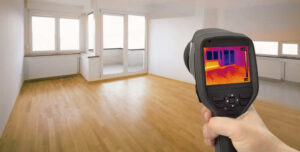Just how to Locate and Fixing Water Leaks-- A Comprehensive Overview
Just how to Locate and Fixing Water Leaks-- A Comprehensive Overview
Blog Article
Presented here down the page you'll find a bunch of amazing points with regards to Locating water leaks.

Early discovery of dripping water lines can minimize a possible calamity. Some little water leaks may not be visible.
1. Examine the Water Meter
Checking it is a surefire means that assists you find leaks. If it moves, that indicates a fast-moving leakage. This suggests you might have a slow leakage that can also be below ground.
2. Check Water Usage
Assess your water expenses and also track your water consumption. As the one paying it, you ought to observe if there are any kind of disparities. If you find sudden changes, regardless of your consumption coinciding, it indicates that you have leakages in your plumbing system. Bear in mind, your water costs should drop under the very same variety on a monthly basis. An abrupt spike in your bill shows a fast-moving leakage.
Meanwhile, a consistent boost monthly, even with the same habits, reveals you have a sluggish leakage that's additionally slowly rising. Call a plumber to extensively examine your home, particularly if you feel a warm area on your flooring with piping below.
3. Do a Food Coloring Test
When it comes to water intake, 30% comes from toilets. If the shade somehow infiltrates your bowl during that time without flushing, there's a leak in between the container and also dish.
4. Asses Outside Lines
Don't forget to inspect your outdoor water lines too. Needs to water leak out of the connection, you have a loosened rubber gasket. One small leak can throw away lots of water and spike your water costs.
5. Examine and also Examine the Circumstance
House owners ought to make it a habit to examine under the sink counters and also even inside cabinets for any type of bad odor or mold development. These two warnings show a leakage so prompt attention is required. Doing regular assessments, also bi-annually, can save you from a significant problem.
A lot more notably, if you know your house is currently old, keep a watchful eye on your heating systems, hose pipes, pipes etc. Look for stainings and also compromising as a lot of pipes and home appliances have a life expectancy. They will also naturally degrade as a result of tear as well as put on. Don't wait for it to rise if you suspect dripping water lines in your plumbing system. Call an expert plumber right away so you do not end up with an awful mess in your house.
Early detection of dripping water lines can minimize a possible calamity. Some tiny water leaks might not be noticeable. Checking it is a surefire method that aids you find leaks. One tiny leakage can squander loads of water and surge your water bill.
If you presume dripping water lines in your plumbing system, don't wait for it to escalate.
WARNING SIGNS OF WATER LEAKAGE BEHIND THE WALL
PERSISTENT MUSTY ODORS
As water slowly drips from a leaky pipe inside the wall, flooring and sheetrock stay damp and develop an odor similar to wet cardboard. It generates a musty smell that can help you find hidden leaks.
MOLD IN UNUSUAL AREAS
Mold usually grows in wet areas like kitchens, baths and laundry rooms. If you spot the stuff on walls or baseboards in other rooms of the house, it’s a good indicator of undetected water leaks.
STAINS THAT GROW
When mold thrives around a leaky pipe, it sometimes takes hold on the inside surface of the affected wall. A growing stain on otherwise clean sheetrock is often your sign of a hidden plumbing problem.
PEELING OR BUBBLING WALLPAPER / PAINT
This clue is easy to miss in rooms that don’t get much use. When you see wallpaper separating along seams or paint bubbling or flaking off the wall, blame sheetrock that stays wet because of an undetected leak.
BUCKLED CEILINGS AND STAINED FLOORS
If ceilings or floors in bathrooms, kitchens or laundry areas develop structural problems, don’t rule out constant damp inside the walls. Wet sheetrock can affect adjacent framing, flooring and ceilings.
https://www.servicemasterbyzaba.com/blog/how-to-detect-water-leakage-in-walls/

As a serious reader about Finding hidden leaks, I thought sharing that excerpt was a good thing. Sharing is good. Helping people is fun. Thank you for going through it.
Report this page